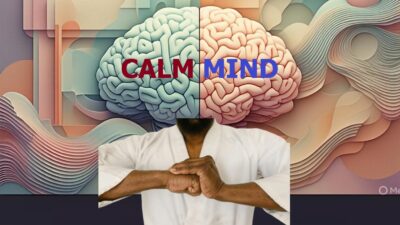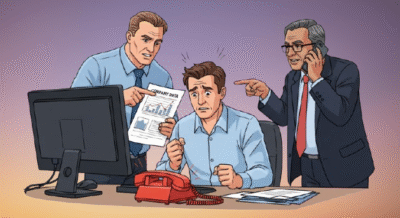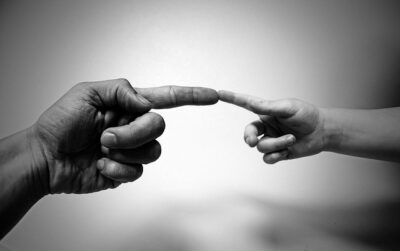Body Gestures possess the transformative power to turn every interaction into an unspoken dialogue where emotions and intentions reveal themselves. By embracing these secrets, you gain access to a realm where subtle shifts in expression and posture communicate more than words ever can. In this guide, you will learn practical, step‐by‐step techniques to decode these hidden signals so that you can connect deeper, act with greater empathy, and achieve more genuine rapport.
Table of contents
1. Understanding Micro-Expressions
Micro-expressions are tiny, involuntary facial movements that flash for just a fraction of a second. They lie at the heart of BODY Gestures and provide incisive clues about a person’s true emotional state. For example, a slight tightening around the eyes or a brief frown can reveal discomfort even when someone’s spoken words remain calm.
Observing these rapid shifts requires active attention and practice. Therefore, you should:
- Focus intently on the area around the eyes and mouth during conversations.
- Note changes in expressions that last no longer than a blink.
- Reflect on context in which these expressions occur, because even subtle signals gain significance when paired with tone and situation.
By consistently practicing this awareness, you set the foundation for understanding BODY LANGUAGE SECRETS more intuitively.
2. Decoding Posture and Gestures
Your posture and the way you gesture can either reinforce or contradict your spoken words. In the realm of BODY Body Gestures, an erect and relaxed stance signals receptivity and confidence, while slouched shoulders may indicate disinterest or anxiety. Hand movements, the direction of your limbs, and even the position of your feet contribute to the overall message you convey.
Consider these practical steps to decode posture and gestures:
- Step 1: When initiating an interaction, quickly observe the overall stance. An open stance with relaxed shoulders often means the person is at ease.
- Step 2: Watch for the position of the arms. For instance, crossed arms might suggest defensiveness, whereas open arms usually imply openness and engagement.
- Step 3: Notice the hands—do they move slowly and purposefully, or do they twitch with nervous energy? These motions can reveal underlying emotions like excitement or stress.
Furthermore, a table can help clarify these observations:
| Nonverbal Cue | Description | Practical Tip |
|---|---|---|
| Subtle Smile | Reveals genuine warmth and interest | Maintain steady eye contact accompanied by a genuine smile |
| Crossed Arms | Often signals defensiveness or discomfort, though context matters | Adopt an open posture to foster a welcoming atmosphere |
| Directed Feet | Indicates focus on a particular person or idea | Observe the direction of feet to gauge genuine engagement |
By methodically assessing these elements, you refine your understanding of BODY LANGUAGE SECRETS and enhance your ability to interpret others in real time.
3. Mastering Eye Contact and Facial Cues
The eyes are often regarded as windows to the soul, and in BODY LANGUAGE SECRETS they play an indispensable role. Strong eye contact builds trust and conveys authenticity, while fleeting glances or excessive blinking might indicate discomfort or evasiveness. However, it is crucial to balance intensity with warmth; too much can feel intimidating, whereas too little may seem disinterested.
To master these cues, consider the following approach:
- Engage fully: Maintain balanced eye contact during conversations without fixating, thereby allowing natural breaks that reflect genuine interaction.
- Notice pupil dilation: Although subtle, slight changes in pupil size can reflect emotional responses such as surprise or mild distress.
- Combine cues: Observe not only the eyes but also accompanying expressions like a slight scowl or gentle smile which can provide deeper insight into feelings.
For example, if you notice that someone’s gaze lingers longer than usual while they offer a warm smile, it might indicate that they are truly engaged. By practicing these observations, you reaffirm the principles of BODY LANGUAGE SECRETS and develop a more nuanced understanding of nonverbal communication.
4. Practical Techniques for Interpreting BODY LANGUAGE SECRETS
Integrating BODY LANGUAGE SECRETS into your daily interactions involves deliberate exercises and reflective practice. Here are some practical techniques to help you apply these insights:
- Observation Exercise: Before entering any conversation, take a brief moment to scan the environment. Observe how people position themselves, noting any distinctive gestures or shifts in posture. This mental calibration sets the stage for accurate interpretation.
- Mirror Practice: Stand before a mirror and experiment with different facial expressions. By consciously adjusting your expressions and observing the changes, you train yourself to recognize micro-expressions and subtle cues. This exercise makes identifying BODY Gestures second nature.
- Contextual Analysis: Combining verbal communication with observations of nonverbal cues offers richer insight. Actively ask yourself whether the body language you observe confirms or contradicts the spoken message. This integrated approach sharpens your interpretative skills.
- Regular Feedback: Engage with a trusted friend or mentor who can provide constructive feedback on your interpretations. Discuss specific instances where body language offered clues about unspoken emotions. Such iterative feedback accelerates learning.
- Consistent Review: Regularly revisit and reflect on the principles of BODY LANGUAGE SECRETS. By doing so, you continually fine-tune your sensitivity to subtle signals and avoid common pitfalls in misinterpretation.
By implementing these techniques, you empower yourself to navigate complex interactions with clarity. Remember that consistent practice with BODY Gestures will not only enhance your observational skills but also boost your confidence in varied social settings.
5. Debunking Common Myths about BODY Gestures
Many myths surround the interpretation of body language, often oversimplifying what is actually a dynamic and nuanced system of communication. One common misconception is that certain gestures universally signal the same emotion. Although crossed arms, for example, are frequently interpreted as defensive, they can simply indicate a temporary feeling of cold or a momentary habit.
Likewise, many believe steady eye contact is an unerring sign of honesty. In truth, cultural factors and individual differences play a significant role; the intensity and duration of eye contact can vary widely from person to person. Therefore, effective interpretation of BODY Gestures always demands a holistic view—one that considers context, situational dynamics, and the interplay between verbal and nonverbal signals.
To guide your understanding, consider these points:
- Consistency is key: Look for patterns rather than isolated cues.
- Context matters: Reflect on the environment, the relationship history, and the ongoing conversation.
- Avoid overgeneralization: Understand that while BODY LANGUAGE SECRETS provide vital clues, they are not the sole determinants of a person’s feelings.
By debunking these myths, you can approach nonverbal communication with a balanced perspective that respects both the art and science behind it.
In conclusion, mastering BODY LANGUAGE SECRETS unlocks a profound understanding of the unspoken realm of human interaction. When you focus on micro-expressions, posture, eye contact, and subtle gestures, you enrich your ability to interpret hidden emotions and intentions. Moreover, incorporating practical and reflective techniques encourages continuous improvement in your interpersonal skills. As you practice and refine these strategies, every conversation becomes an opportunity for genuine connection and growth.
Additionally, consider exploring further studies and experiments in nonverbal communication to expand your knowledge. Emerging research shows that individuals who consistently apply BODY Gestures in leadership, negotiations, and daily interactions tend to achieve higher levels of trust and collaboration. Embrace these insights, and allow this newfound awareness to enhance every facet of your social and professional life.
references
Warning: The provided links lead only to the specified content. Other areas of those sites may contain material that conflicts with some beliefs or ethics. Please view only the intended page.
- Kayf.co Guide: A detailed guide on nonverbal cues and body language insights. https://kayf.co/body-language-secrets/
- InfoBooks PDF Collection: A collection of free PDF books on body language studies. https://www.infobooks.org/free-pdf-books/psychology/body-language/
- Archive.org Book: The online book “Body Language Secrets: How to Read Minds by Reading Bodies” by Michael C. Anthony (2014). https://archive.org/details/bodylanguagesecr0000anth
Image designed by gstudioimagen1






